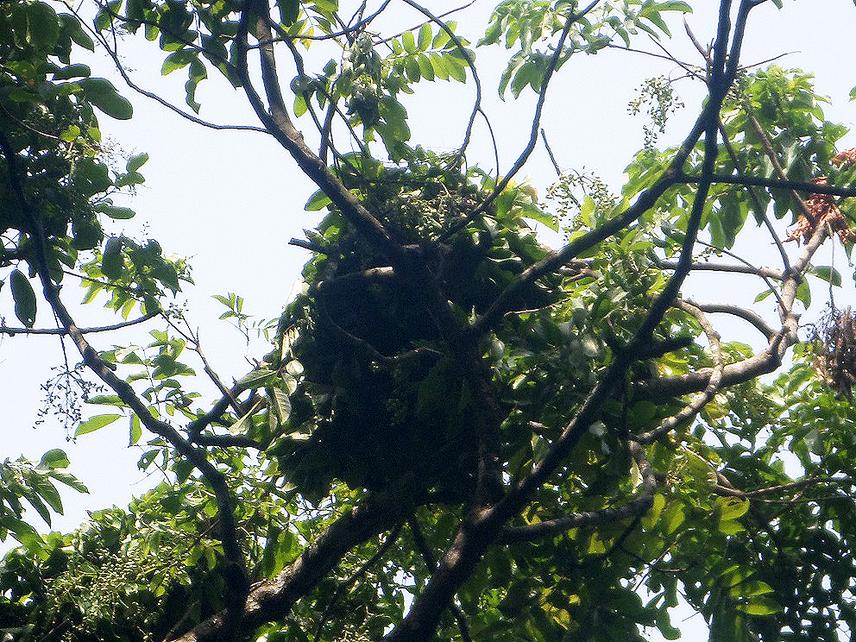Chefor Fotang
Other projects
8 Mar 2018
Ecology and Behaviour of the Nigeria - Cameroon Chimpanzee in Kom-Wum Forest Reserve and Mbi Crater Kefem Landscape in the North- West Region of Cameroon
20 Aug 2019
Human-Chimpanzee Interaction and Habitat Suitability of the Nigeria-Cameroon Chimpanzee (Pan troglodytes ellioti) in Kom-Wum Forest Reserve, Cameroon
26 Apr 2023
Strengthening Chimpanzee Conservation in Kom–Wum Forest Reserve, Cameroon, through Law Enforcement, Livelihood Improvement, and Conservation Education
My project aims to add to what little is known about the fruit availability and dietary preference of Pan troglodytes ellioti by investigating how seasonal variation in fruit production affects the composition of Pan troglodytes ellioti diet in the Kom-Wum Forest and specifically to:
1. Assess seasonal productivity of chimpanzee feeding trees species
2. Investigate dietary composition, seasonal changes in diet and dietary preference

Chimpanzee nest on a tree in Kom-Wum Forest Reserve.© Fotang Chefor.
The availability of primate diets depends on the spatiotemporal variation in the phenological events of plants (van Schaik et al. 1993; van Schaik and Brockman 2005). Fruit availability varies between different habitats and seasons: at some study sites, ripe fruits are highly abundant during the wet season (Basabose 2005; Hernandez-Aguilar 2009; Suzuki 1969; Tutin et al. 1997) while at other study locations fruit abundance increases during the dry season (Hockings et al. 2009). Fruits represent a significant portion in the diets of great apes such as chimpanzees, bonobos and gorillas, which spent a considerable amount of their foraging time eating fruits (Tutin and Fernandez 1985). About 78% of chimpanzee's diet is made up of fruits (Tutin and Fernandez 1985). Studying the diet of chimpanzee can reveal vital information about habitat use (Bryson-Morrison et al. 2017).
Studies on dietary patterns and fruit availability of Pan troglodytes ellioti have been conducted in the Ngel Nyaki Forest Reserve in Nigeria (Dutton and Chapman 2014), Ebo Forest Reserve and Mbam-Djerem National Park in Cameroon (Abwe et al. 2020). Information on the fruit availability and dietary ecology of Pan troglodytes ellioti is still scanty in some priority conservation sites for chimpanzee in western Cameroon, including the Kom- Wum Forest Reserve (Morgan et al. 2011). Preliminary studies were initiated in Kom-Wum Forest Reserve in 2018 to study the diet of chimpanzees. Fotang (2018) identified the fruits of thirteen woody plant species in chimpanzee's diet through microscopic faecal examination. However, the fruiting phenology of the thirteen woody plant taxa consumed by chimpanzees identified and other important chimpanzee plant food is still unknown in Kom-Wum. The current project aims to contribute to what little is known about the dietary ecology of Pan troglodytes ellioti by investigating how seasonal variation in fruit production affects the composition of chimpanzee's diet in the Kom-Wum Forest Reserve and surrounding forests. Studying the composition of Pan troglodytes ellioti diets and identifying the factors that determine diet selection is crucial in understanding their habitat requirements and designing conservation plans to protect them better.